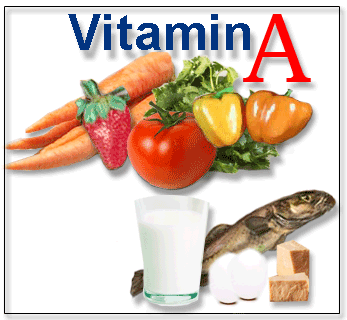Vitamin A

Vitamin A, also called retinol, has many functions in the body. In addition to helping the eyes adjust to light changes, vitamin A plays an important role in bone growth, tooth development, reproduction, cell division and gene expression. Also, the skin, eyes and mucous membranes of the mouth, nose, throat and lungs depend on vitamin A to remain moist.
The best way to ensure your body gets enough vitamin A is to eat a variety of foods. Vitamin A is supplied primarily by certain foods of animal origin like dairy products, fish and liver. Some foods of plant origin contain beta-carotene, an antioxidant that the body converts to vitamin A. Beta-carotene, or provitamin A, comes from fruits and vegetables. Carrots, pumpkin, winter squash, dark green leafy vegetables and apricots are rich sources of beta-carotene.
The recommendation for vitamin A intake is expressed as micrograms (mcg) of retinol activity equivalents (RAE). Retinol activity equivalents account for the fact that the body converts only a portion of beta-carotene to retinol. One RAE equals 1 mcg of retinol or 12 mcg of beta-carotene.
Sources: The best source is by far liver. Old world homeopathic remedies suggested that liver could cure the blind. Other sources of pure vitamin A are fortified milk and dairy products, butter, whole milk, cheese, egg yolk.
Provitamin A, which is the vegetable version are found in carrots, leafy green vegetables, sweet potatoes, pumpkins, winter squash, apricots and cantaloupe.
A deficiency in Vitamin A would cause night blindness, very dry, rough skin, decreased resistance to infections, faulty tooth development, and slower bone growth.
As for making it go down smooth, here's a great website with recipes for a healthy, vitamin A-rich diet.
5 Vitamin A Rich Recipes You Must Try

No comments:
Post a Comment